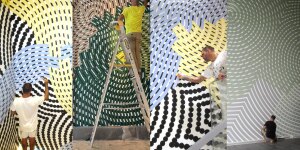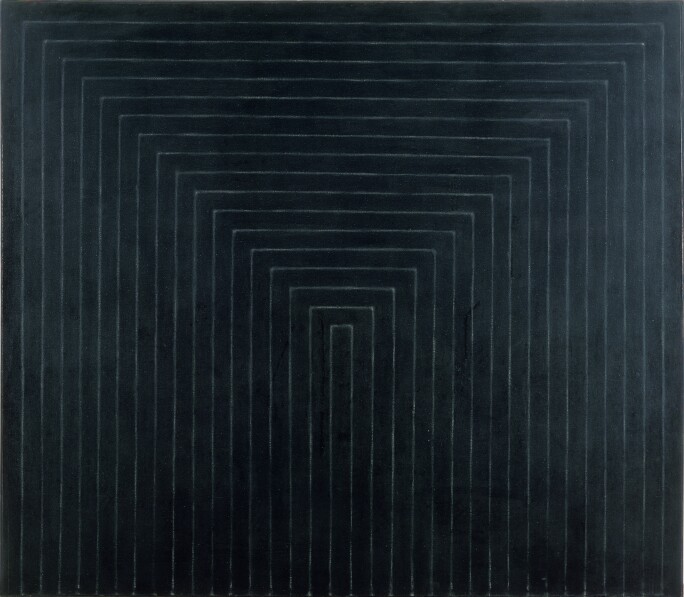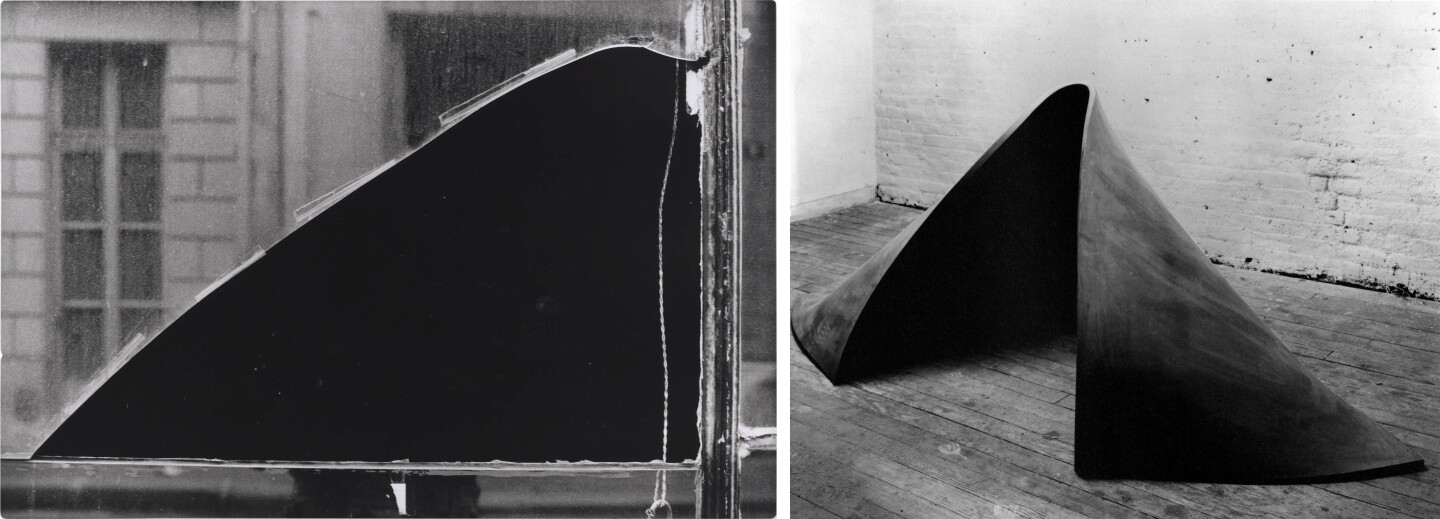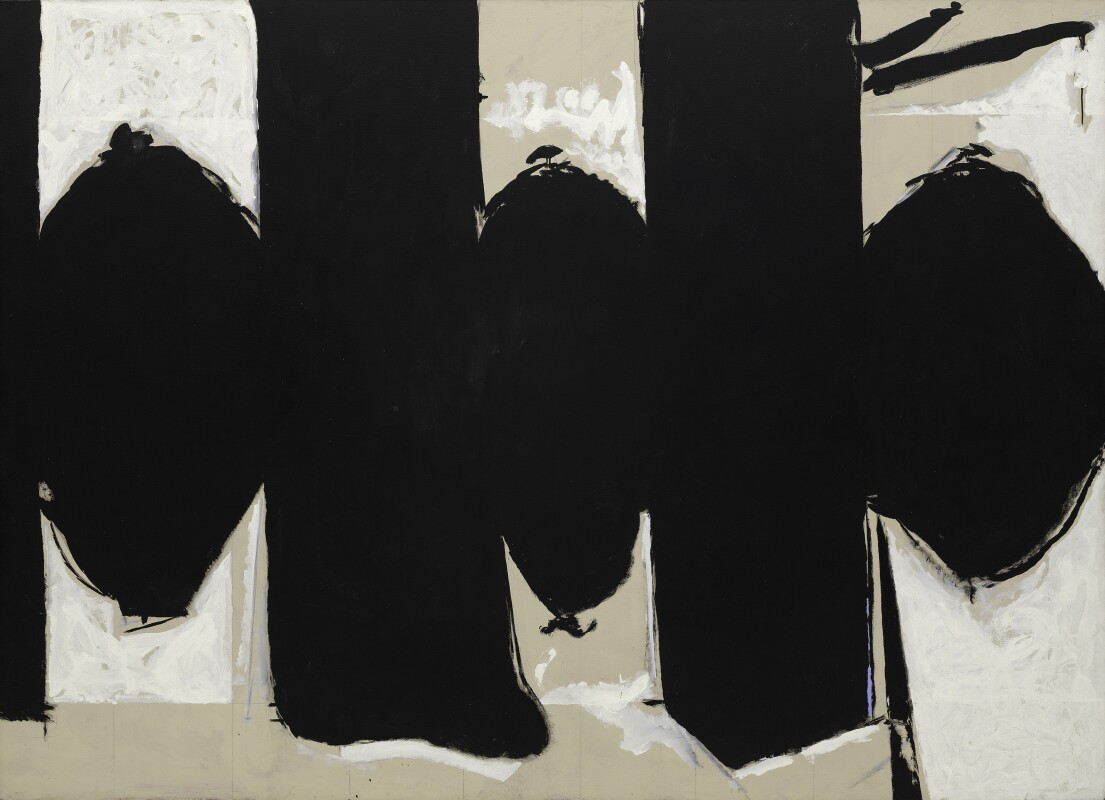Lot11 L24006 CN6NB
-
 Contemporary ArtFinding Purpose in Art, Identity & the Ocean: In The Studio with Otis Hope Carey
Contemporary ArtFinding Purpose in Art, Identity & the Ocean: In The Studio with Otis Hope Carey -
 Sotheby's StoriesHow Jane Birkin's Original Hermès Birkin Bag Made History... Again | A Sotheby's Auction Story
Sotheby's StoriesHow Jane Birkin's Original Hermès Birkin Bag Made History... Again | A Sotheby's Auction Story -
 Handbags & FashionJane Birkin's Original Hermès Birkin Bag Shatters Auction Records at $10.1 Million | Sotheby's
Handbags & FashionJane Birkin's Original Hermès Birkin Bag Shatters Auction Records at $10.1 Million | Sotheby's
A masterful fusion of sculpture and painting, Ellsworth Kelly’s monumental Black Panel with Curve is a superb example of the artist’s iconic shaped canvas paintings. Drawing on works by modern masters such as Kazimir Malevich, Henri Matisse and Jean Arp, Kelly created a dramatic and idiosyncratic visual lexicon that has come to define his work. Experimenting unflinchingly with colour, form and materiality, his monochromatic shaped canvases foreground the physical limitations of objects, casting attention onto their outlines and tactile presence. As he stated:
"I have worked to free shape from its ground, and then to work the shape so that it has a definite relationship to the space around it; so that it has a clarity and a measure within itself of its parts (angles, curves, edges and mass); and so that, with colour and tonality, the shape finds its own space and always demands its freedom and separateness.”

Typical of his conceptually and materially inventive practice, the present work unifies figure and ground into one entity – a single shape joined to a monochromatic field. Almost two metres high and wide, the upper edge curves down gently from right to left, forming a jarring yet complementary relationship with the other three precisely straight sides. The curved form was central to Kelly’s oeuvre, the result of an accident of perception, a shape glanced out of the corner of his eye, which he then sketched, photographed, and ultimately translated into painterly or sculptural entities. In the present work, the correspondence between the deep, almost imperceptible black and pristine canvas surface sublimely articulates the unification of colour and form that defines Kelly’s practice. Defying the traditionally representational role of pigment, colour becomes form in an uncompromising manner that concatenates painting, sculpture and relief.

Ellsworth Kelly's Shaped Canvases in Institutional Collections
As Gottfried Boehm has noted: "The decisive point in Kelly's development was reached when he abandoned the traditional dynamic of painting's organization, when form emancipated itself from its customary support, the ground, so that it could from then on lead an independent existence in the visual world" (Exh. Cat., Riehen/Basel, Fondation Beyeler, Ellsworth Kelly, 2002, p. 33). Black Panel with Curve emblematises this simultaneous divergence and fusion. Denying the conventional illusionistic aims and imitative realism of painting, the canvas becomes an almost anodyne, industrial object of physical presence. In this sense, it draws close to icons of Minimalism, most notably Donald Judd’s “specific objects” which, eliding any trace of the artist’s hand, operate as autonomous presences within real space and time. While Kelly’s hard-edged forms undoubtedly draw on a similar kind of empirical philosophy, his shaped canvases retain an affective sensitivity to the viewer’s immediate, unmediated visual experience. The chromatic clarity and geometric simplicity of the present work becomes a conduit for communication between viewer and artwork as object, rejecting metaphor, allusion or metaphysics as modes of interpretation.

RIGHT: RICHARD SERRA, TO LIFT, 1967. COURTESY DAVID ZWIRNER GALLERY. IMAGE © PETER MOORE. ART © 2023 RICHARD SERRA / ARTISTS RIGHTS SOCIETY (ARS), NEW YORK
When Kelly's geometric abstractions were first exhibited in 1959, they were perceived as having “hard, crisp edges [that] commanded the eye to feel them as the hand would feel soft flesh” (Exh. Cat., New York, The Museum of Modern Art, Sixteen Americans, 1959, p. 31). This kind of corporeality is key to Kelly’s practice, finding its inspiration in precise sources of naturally occurring abstraction: the light streaming through a mullioned window, the silhouette of a bird’s wing against the sky, the shape of a leaf folded over onto itself. Such an awareness of experience is markedly postmodern in approach: “In my own work, I have never been interested in painterliness (or what I find is) a personal handwriting, putting marks on canvas. My work is a different way of seeing and making something and which has a different use” (Ellsworth Kelly, Notes of 1969, reprinted in: Kristine Stiles and Peter Selz, Theories and Documents of Contemporary Art, Berkeley 1996, p. 93). In turn, the shaped canvases betray a post-war preoccupation with alternate methods of representation and the viewer’s perception of the final product. As Simon Schama has explained, Kelly’s works are born from “perceptual serendipity – in a shadow, a reflection, a partly obscured object or shape – from which he then shears away a visual fragment” (Simon Schama quoted in: Rachel Cooke, “Ellsworth Kelly: ‘I want to live another 15 years’,” The Guardian, 8 November 2015, online). These points of reference, austerely stripped down to their most fundamental components, ground Kelly’s art in physical space.

An important exponent of a unique kind of abstract art in the post-war era, Kelly created works of startling visual intensity, lyrically distilling visual experiences rooted in nature, transforming them into pure abstraction through flat planes of colour. As he has outlined, "I'm interested in the mass and color, the black and white – the edges happen because the forms get as quiet as they can be" (the artist quoted in: Exh. Cat., New York, The Solomon R. Guggenheim Museum, Ellsworth Kelly: A Retrospective, 1996, p. 11). His art has influenced some of the most significant movements of the past half century, ranging from geometric and post-painterly abstraction to Minimalism and hard-edge painting, while never formally belonging to any of them. At its core, Kelly’s practice remains entirely introspective and contemplative yet razor-sharp in conception and execution. In its blunt yet sophisticated economy of means, Black Panel with Curve both calls into question and strains against the physical and ideological boundaries of “art.” Eschewing painterly gesture in favour of material presence, the artist has liberated colour and form, engaging the viewer in a participatory perceptual experience. In this way, Black Panel with Curve defines space without dominating it, creating its own reality, one that resounds with the extraordinary profundity of Ellsworth Kelly’s celebrated practice.







